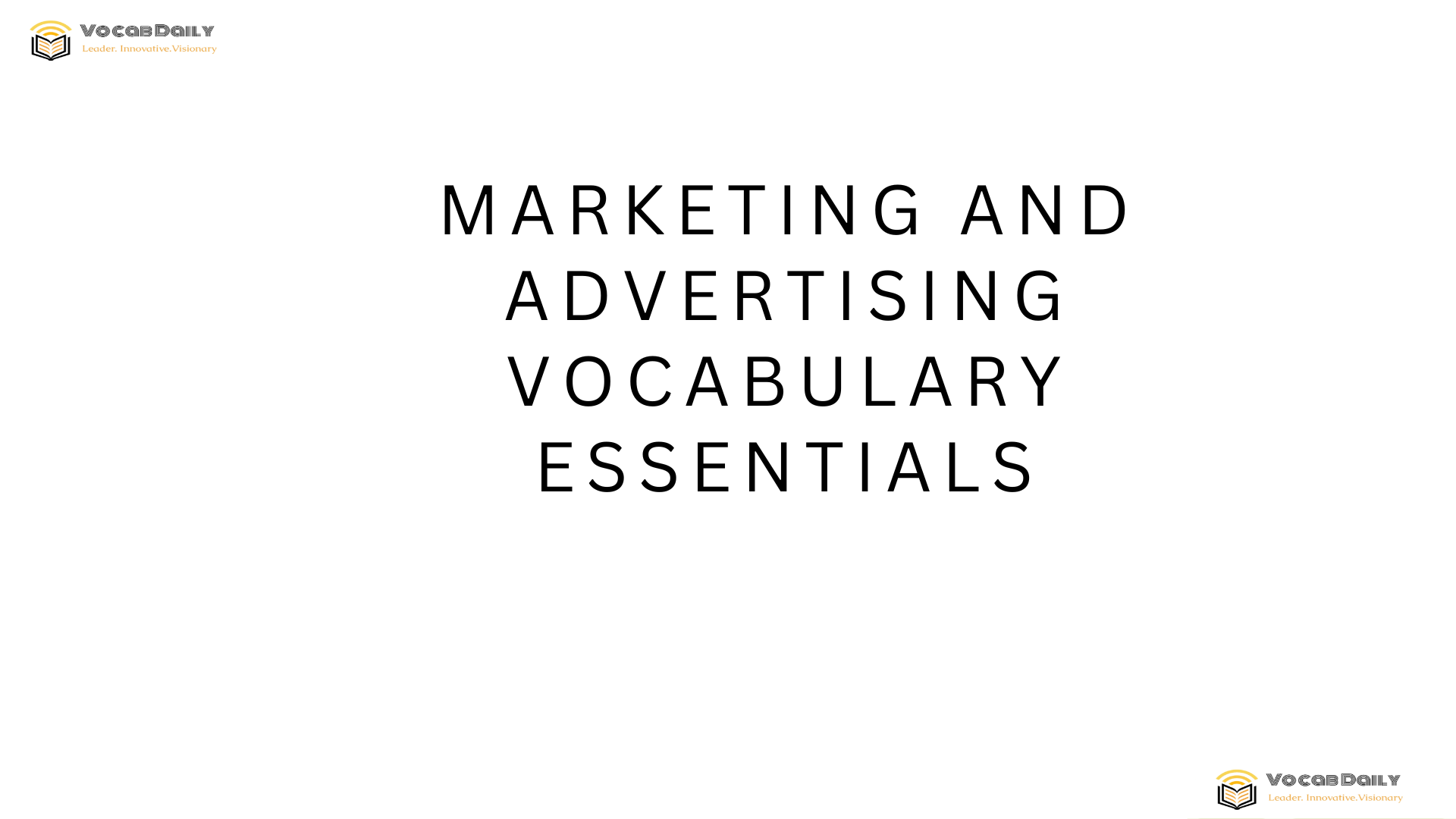Understanding Key Marketing Terms
Marketing and advertising are dynamic fields that rely heavily on precise language to convey strategies and goals effectively. Whether you are a student, professional, or business owner, mastering essential marketing vocabulary can significantly enhance your communication and understanding within the industry. This section introduces core marketing terms that form the backbone of marketing discussions.
One fundamental term is target audience. This refers to the specific group of consumers that a marketing campaign aims to reach. Identifying the target audience helps businesses tailor their messages to meet the specific needs, preferences, and behaviors of that group. Next is the concept of a brand, which is more than just a logo or name; it represents a company’s identity, values, and reputation in the marketplace.
Another key vocabulary word is market segment, which involves dividing a broad market into subsets of consumers with common needs or characteristics. This allows for more focused marketing efforts. Related to this is positioning, a strategy that influences how a brand or product is perceived in the minds of consumers relative to competitors.
Advertising Media and Channels
Advertising vocabulary includes specific terms related to the platforms and methods used to deliver promotional messages. Understanding these terms is essential for crafting effective campaigns and choosing the right mediums.
Print media (newspapers, magazines, flyers) has long been a staple in advertising but now often works alongside digital media, which includes online platforms such as social media, websites, and email campaigns. Broadcast media refers to television and radio advertisements, offering wide reach and high impact. Within digital media, terms like pay-per-click (PPC) and search engine marketing (SEM) describe specific paid advertising tactics focused on online visibility.
Terms like reach and frequency measure the effectiveness of an advertisement. Reach is the total number of different individuals who see the ad, while frequency refers to how often those individuals are exposed to the same message. These metrics help marketers assess and optimize their campaigns.
Essential Marketing Strategies and Concepts
Marketing professionals use a variety of strategies to attract and retain customers. Familiarity with these terms enables clearer planning and discussion of marketing efforts.
Content marketing involves creating valuable, relevant content to attract and engage a target audience. Instead of direct selling, the focus is on building trust and brand authority. Inbound marketing complements this approach by drawing customers in through attractive content and interactions rather than through aggressive sales tactics.
Lead generation is a critical activity that focuses on capturing interest in a product or service to create potential customer lists. Once leads are generated, lead nurturing helps guide those prospects through the sales funnel until they convert into paying customers.
Effective campaigns are often supported by market research, the process of gathering and analyzing data about consumers, competitors, and market conditions to make informed decisions. Demographics and psychographics are categories of data that help describe customer groups based on age, income, lifestyle, attitudes, and interests.
Advertising Campaign Components
Understanding the building blocks of an advertising campaign can improve execution and dialogue with team members or clients.
The creative brief is a vital document that outlines the objectives, target audience, budget, and key messages of a campaign. It acts as a roadmap for the creative team. The call to action (CTA) is the phrase or instruction designed to provoke an immediate response from the audience, such as “Buy Now” or “Sign Up Today.”
Another important term is ad copy, which is the written text in an advertisement. Effective ad copy combines persuasive language with clear messaging to capture attention and encourage action. Visual elements such as images, logos, and videos work alongside copy to reinforce the campaign’s message.
A/B testing is a method used to compare two versions of an ad or webpage to see which performs better. This data-driven approach helps marketers optimize their materials for higher engagement and conversion rates.
Digital Marketing Specific Terms
The rise of the internet has introduced numerous terms specific to digital marketing that are essential to know.
Search engine optimization (SEO) aims to increase a website’s visibility on search engines through organic, unpaid results by optimizing content and structure. Keywords are specific words or phrases that users type into search engines, and careful keyword research helps marketers design content that matches user intent.
Social media marketing uses platforms like Facebook, Instagram, LinkedIn, and Twitter to promote products or brands. Terms like engagement rate and followers measure audience interaction and growth on these channels.
Email marketing involves sending promotional messages directly to a user’s inbox. Open rate and click-through rate (CTR) are key metrics that show how effective these emails are in reaching and influencing recipients.
Common Marketing Metrics and Analytics
Measuring success is crucial in marketing. Being familiar with analytic terms helps interpret data and adjust strategies as needed.
Return on investment (ROI) calculates the profitability of marketing efforts by comparing the revenue generated to the amount spent. Conversion rate measures the percentage of users who take a desired action, such as making a purchase or filling out a form.
Customer acquisition cost (CAC) tracks the expense involved in gaining a new customer. Understanding CAC alongside the customer lifetime value (CLV), the total worth of a customer over their relationship with a business, helps determine the efficiency of marketing campaigns.
Bounce rate refers to the percentage of visitors who leave a website after viewing only one page, indicating potential issues with engagement or relevance. Monitoring these metrics allows marketers to make informed choices for continuous improvement.
By becoming fluent in marketing and advertising vocabulary, professionals can communicate more effectively, make better strategic decisions, and contribute to successful campaigns that resonate with their audiences. Building this vocabulary is an investment in your career, business growth, and overall marketing excellence.
Also check out VocabDaily workbook collections.

Leave a Reply